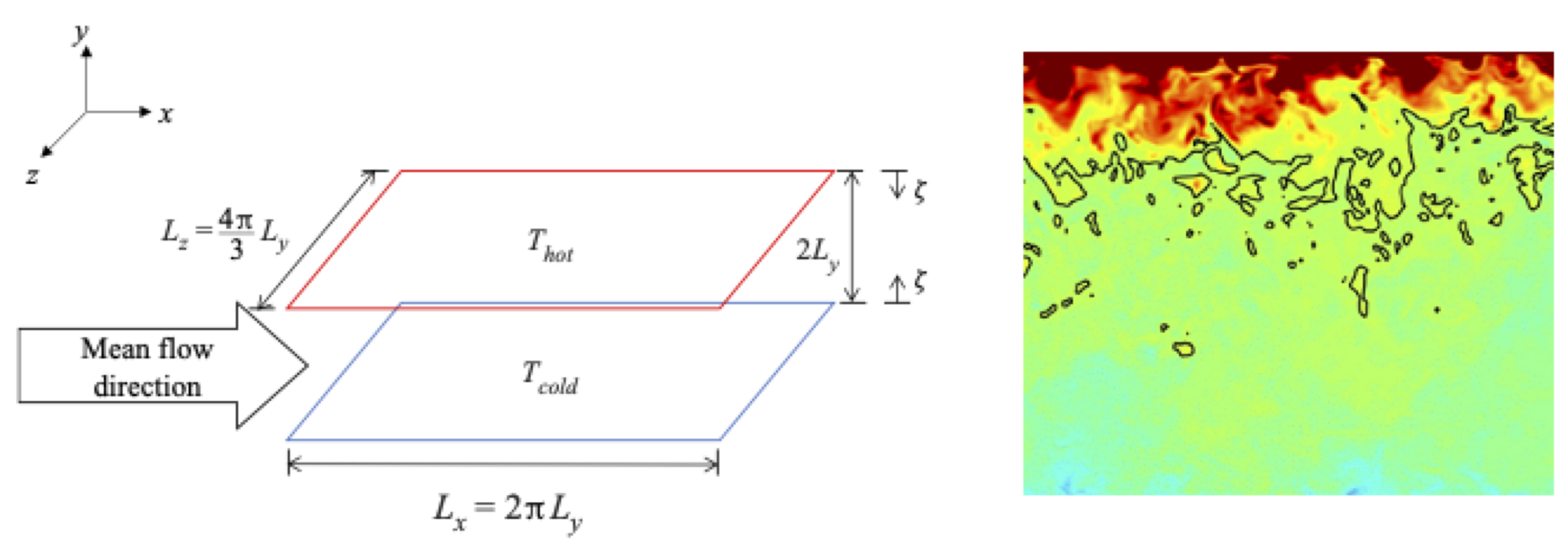
Description
The study by Guo et al. involves six different configurations of wall-bounded DNS in the transcritical regime. The schematic of the DNS setup is shown in Figure 11. They used nitrogen N2 as the working fluid with a critical pressure and temperature of pc = 3.39 MPa and Tc = 126.19 K. These studies consider the flow of N2 inside a channel with a hot top and a cold bottom wall with temperatures Thot and Tcold, respectively. The six variations correspond to different temperature ratio (TR) between the two walls. The channel is periodic in streamwise and spanwise direction, while the wall boundary conditions are enforces at two walls. The domain dimensions are Lx × 2Ly × Lz , where Lx/Ly = 2π, Lz/Ly = 4π/3 and the channel height is 2Ly = 9.0132×10−5 m. A Cartesian grid (with mesh size 384 × 256 × 384) is used for all six configurations.
A compressible finite-volume solver is used for these DNS. The governing equations are solved using a strong stability-preserving Runge-Kutta scheme with third-order accuracy in time step- ping, and a fourth-order accurate central spatial finite difference, which reduces to third-order for non-uniform meshes. As the conditions of these simulations are in the transcritical regime, the Peng-Robinson EoS is used, which provides better accuracy in predicting thermodynamic variables than ideal gas in the investigated regime. To avoid the pressure oscillations and to obtain physically realizable solutions, an entropy-stable double-flux model is used along with second-order accu- rate essentially non-oscillatory (ENO) scheme and Harten-Lax-Van Leer contact (HLLC) Riemann flux computations.
Quick Info
- Kaggle Link
- Contributors: Jack Guo, Matthias Ihme
- Nx = 385, Ny = 257, Nz = 257, Nɸ = 6
- Size = 93 GB
- DOI
- .bib
- info.json